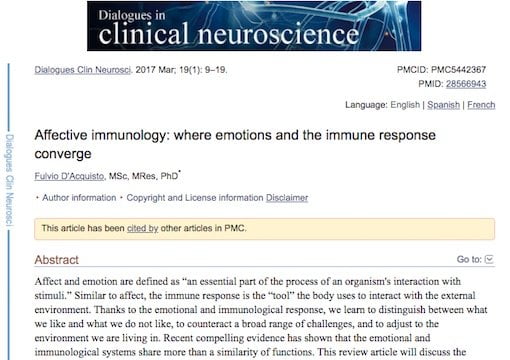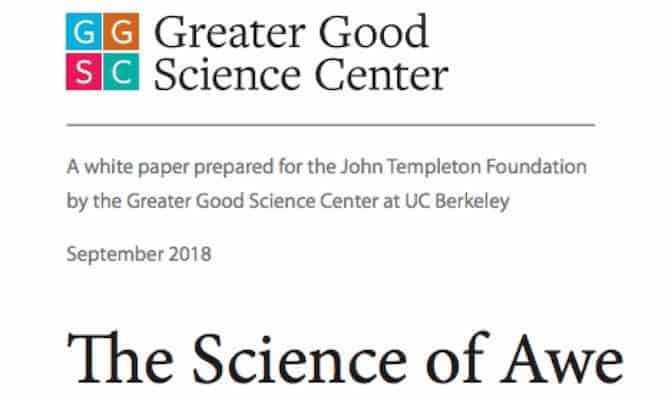We all worry about the future nowadays. Things, like “will we stay healthy despite COVID-19 and what may happen to our businesses”.
We may consider worry a “negative” emotion, but it is also an important evolutionary adaptation which we are all hard-wired to have. Anxiety, worry, fear, etc. can all activate the sympathetic nervous system and fight-or-flight responses we use to survive.
However, these emotions can also weaken the immune system and make us less resistant to infections like COVID (1).

“Positive” feelings like happiness, love, gratitude and awe can improve the immune surveillance that let’s the immune system detect and destroy the virus.
This may not keep you from getting sick, but feeling positive emotions like “awe”, from observing natural phenomena, are research-proven to improve things like infections, quality of life and even cancer (2).
 A few strategies to decrease this worry include:
A few strategies to decrease this worry include:
- sticking to well-defined schedules – i.e. virtual yoga every day at 12
- practicing temporal distancing – think about a time when life is more normal
- connecting socially – while physically distancing
- appreciating nature – watch the sunset, some birds flying, etc.
Think about how fortunate our earth is that we are giving her this unprecedented rest. Our atmosphere is rejuvenating to help the wonders of nature live on for many years.
Experiencing positive emotions are just one way to support our bodies to help them resist the virus. These supportive actions are one of the Avoid, Support and Cure (ASC) methods that can be used to keep us well.
It is especially helpful nowadays, as we slowly expose ourselves to others, to know that we can use all 3 together to survive and thrive. By ASCing what we can do, we can formulate a specific action plan. Supportive and Curative Holistic Actions! may even improve your immune system’s ability to detect and destroy the virus. Optimizing this natural process of immune surveillance reduces risk of infection and cancer (3).

The CDC and WHO have given us important strategies to Avoid the virus, as we should, to use the first of the 3 categories. Here are all 3 of the harmless and helpful Holistic Actions! that we can use:
1. AVOID – actions to prevent viral exposure
- physical distance
- wash your hands
- stop touching our faces
2. SUPPORT – actions that promote healing and immune surveillance
- eating vital (fresh) foods like wild blueberries and kale
- breathing deeply through our noses
- feeling positive emotions and connecting
3. CURE – actions that work to eliminate a hypothesized underlying energetic imbalance
- Traditional Chinese Medicine (like acupuncture)
- ayurveda
- homeopathy

#3 can be especially reassuring even though it uses a different medical paradigm than we practice. Numbers do not lie, and with epidemics they are compelling.
For example, it is reassuring to look at historical data about past epidemics and pandemics. >30% more NY City residents (vs. Philadelphia and Boston) could stay healthy during the 1918 Spanish Flu in New York City thanks to the health commissioner who was a homeopath (4).
In fact, homeopathy saved so many lives during this and past epidemics like flu, cholera, typhoid, etc. that the only monument to a foreign doctor in Washington DC honors Dr.
Hahnemann who first described homeopathy.
While you’re Avoiding the virus, perhaps watch the Empower Hour! Webinar below to learn more about support the body and activating natural healing mechanisms using homeopathy. This is especially important nowadays when anti-inflammatories, which interfere with natural healing mechanisms, can worsen COVID outcomes.
- 00:00 Introducing today’s topic and guest
- 03:00 Genus epidemicus for fear
- 07:00 Switching the views – power of nature
- 10:00 Explaining genus epidemicus and homeopathic doctors’ experience
- 14:00 Fear = susceptibility
- 21:00 Conquering fear – focusing on love based medicine.
- 23:30 Homeopathy preventing a pandemic / Spanish flu
- 31:30 Laughing medicine
- 33:30 Q&A: wearing masks
- 41:00 Social distancing vs. physical distancing / some humor
- 44:00 Shift network to decrease fear
- 46:00 Laughing / Patch Adams
- 47:10 Homeopathic remedies and how to distinguish between them
- 49:00 Spiritual side of Corona
- 51:45 Gradual exposure protocol / Parvo / nosodes / weekly interval
- 56:30 Corona in cats
References
- D’Acquisto F. Affective immunology: where emotions and the immune response converge. Dialogues Clin Neurosci. 2017;19(1):9–19.
- https://ggsc.berkeley.edu/images/uploads/GGSC-JTF_White_Paper-Awe_FINAL.pdf?_ga=2.264775759.1940632547.1560215051-317587101.1560215051
- Swann JB, Smyth MJ. Immune surveillance of tumors. J Clin Invest. 2007;117(5):1137–1146. doi:10.1172/JCI31405
- Aimone F. The 1918 influenza epidemic in New York City: a review of the public health response. Public Health Rep. 2010;125 Suppl 3(Suppl 3):71–79. doi:10.1177/00333549101250S310
